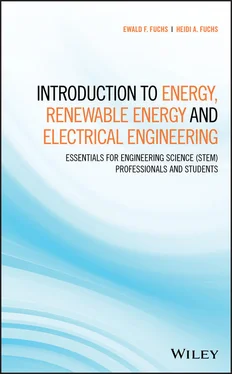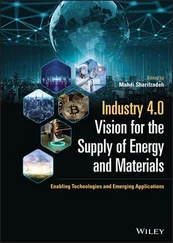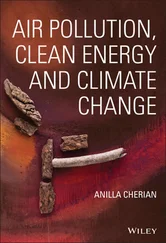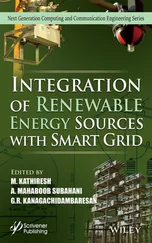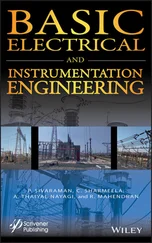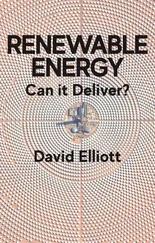1 ...8 9 10 12 13 14 ...19 2018
Ewald F. Fuchs, Professor
Department of Electrical,
Computer, and Energy Engineering
University of Colorado at Boulder
Boulder, CO, USA
ewald.fuchs@colorado.edu
ewald.fuchs@gmail.com
Heidi A. Fuchs, Senior Research Associate
Energy Efficiency Standards Group
Energy Technologies Area
Lawrence Berkeley National Laboratory
Berkeley, CA, USA
hfuchs@lbl.gov
heidi.fuchs@gmail.com
This textbook breaks new ground in introducing students and professionals in science, technology, engineering, and mathematics (STEM) disciplines to electric energy associated with renewable resources, energy conservation, and laws of thermodynamics converting heat to mechanical power such as Carnot, Rankine, Brayton, and Ericsson cycles as they apply to internal combustion engines as well as to steam, gas, and oil turbines. It compares the energy content of common fuels, which is important for deciding how energy conservation and CO 2reduction might take place. Next, it discusses various heat pump principles such as water–water, air–water, and air‐conditioning systems; one of these principles is illustrated with yearlong measured data of a single‐family (zero net energy) house where a photovoltaic (PV) plant delivers more energy than heating and cooling the house requires. The coefficient of performance based on combined heating and cooling performance (CHCP) is applied to this zero‐emission house.
For storing the surplus energy of PV and wind power plants, this text shows how pumped‐storage hydroelectricity and either battery or fuel cell storage plants are indispensable in conjunction with reformers changing methane to hydrogen for electric cars, as well as electrolysis for hydrogen generation from water and electric surplus energy. Wind power plants are analyzed based on the Lanchester–Betz–Joukowsky limit. In addition, design data of the abovementioned single‐family house PV plant are explained and evaluated for performance. Further, this book assesses the advantages and disadvantages of AC versus DC transmission/distribution systems, including understanding the nature of electricity and its manufacturing, which are essential for the development of smart power systems. Associated with this manufacturing process are the costs of electricity in renewable energy systems.
In this book, circuit analyses are based on laws of electrical and mechanical engineering properties of electric charges, forces, conductors, insulators, semiconductors, instantaneous voltage, current, power, and work. For the analysis of electric networks, this volume describes Ohm's and Kirchhoff's laws as well as Thévenin's and Norton's theorems, nodal analysis, loop and mesh analysis, source exchange or transformation, and Wheatstone and Thomson bridges. The principle of superposition lends itself to complicated linear circuits. Transient DC and steady‐state phasor AC analytic circuit investigations based on hand calculations are compared to linear and nonlinear PSPICE and Mathematica solutions. Also explained are instantaneous and steady‐state power analyses, coupled magnetic circuits including design of permanent magnets, and single‐ and three‐phase transformers, AC frequency characteristics of filters, and trigonometric and complex Fourier analyses. Operational amplifiers are important for control applications, consisting of semiconductor diodes and switches for voltage and current controllers, rectifiers, and inverters. Circuit models of semiconductor diodes including limiters and various switches (e.g. BJT MOSFET, SCR, triac, IGBT, and GTO) are introduced so that they can be readily used for PSPICE solutions.
In addition, this book provides novel applications for uncontrolled and controlled AC–DC converters (rectifiers), AC voltage and current regulators, and DC–AC converters (inverters) to PV and wind power plants and considers the efficiency increase and the resulting power quality problems resulting from these nonlinear components. DC machines and their commutator actions serve as role models for electronic commutation employed for rectifiers and inverters, which are indispensable for the formation of smart power systems. Permanent‐magnet, induction, and synchronous machine variable‐speed and torque drives with high switching frequencies are analyzed as used in electric/hybrid automobiles, wind power plants, and trains, by dealing with flux weakening (FW) and introducing compensation of flux weakening (CFW) at high angular velocities, reducing the need for high battery voltages (e.g. 800 V) in automobiles; in addition, various permanent‐magnet characteristics are relied on for automobile‐drive designs. For the determination of machine parameters, such as linear and nonlinear (operating‐point‐dependent) leakage, mutual, and self‐inductances, magnetic field computation based on finite‐difference (FD) and finite‐element (FE) techniques is reviewed and employed for permanent‐magnet, induction, and synchronous machines.
This text teaches by example. The book's innovative approach applies to 125 application examples and 157 problems highlight the teaching approach so that STEM students and professionals can better understand the electrical engineering and sciences associated with renewable energy issues by working through them. 449 reference citations are listed, which permit the reader to further delve into renewable energy projects. PSPICE and Mathematica software programs are included, for which personal computers suffice. Finally, the ~309‐page Instructor Manual provides solutions to the abovementioned problems.
Real‐world energy measurements of a single‐family house with zero CO2 emissions including PV plant, groundwater–water heat pump, and groundwater cooling.
Design and performance of permanent‐magnet, induction, and synchronous machine drives for electric/hybrid automobiles and rail drives for starting, rated operation, flux weakening (FW), and compensation of flux weakening (CFW), with torque and speed control within wide speed range.
Design and performance of wind power and PV plants.
Introduction to magnetic field analyses based on finite‐element (FE) and finite‐difference (FD) methods with respect to permanent, induction, and synchronous machine drives.
Explanation of the nature of electricity and its manufacturing.
The book's novel approach applies to 125 practical application (example) problems with solutions.
157 problems at the end of chapters, with solutions in the ~309‐page Instructor Manual.
449 references – mostly journal articles and conference papers – as well as national and international standards and guidelines.
This book is intended for undergraduate students in non‐electrical engineering disciplines such as architectural, civil, and mechanical engineering, physics, and chemistry, as well as professionals in related fields who want to acquaint themselves with electrical engineering as applied to energy or specifically to renewable energy. It is assumed that the reader has good high school and/or applied mathematics educational college background such as Calculus III – covering vector analysis, complex numbers, differentiation, ordinary differential equations, and partial derivatives as well as integration. This text integrates energy and electrical engineering technologies, starting from basic principles and covering detailed analyses of renewable and electric energy issues and their solutions. Application examples highlight conventional and renewable energy problems. Software programs such as Mathematica and PSPICE (Personal Computer Simulation Program with Integrated Circuit Emphasis) are applied to solve component and system problems.
Читать дальше
